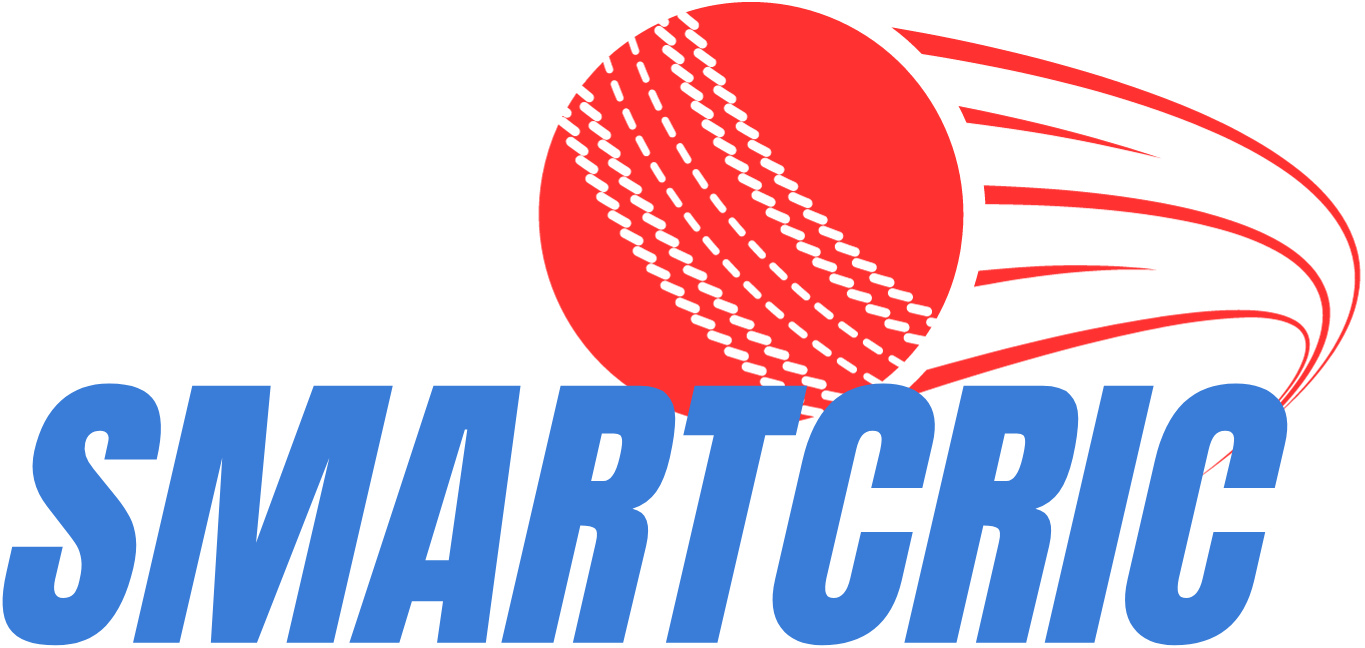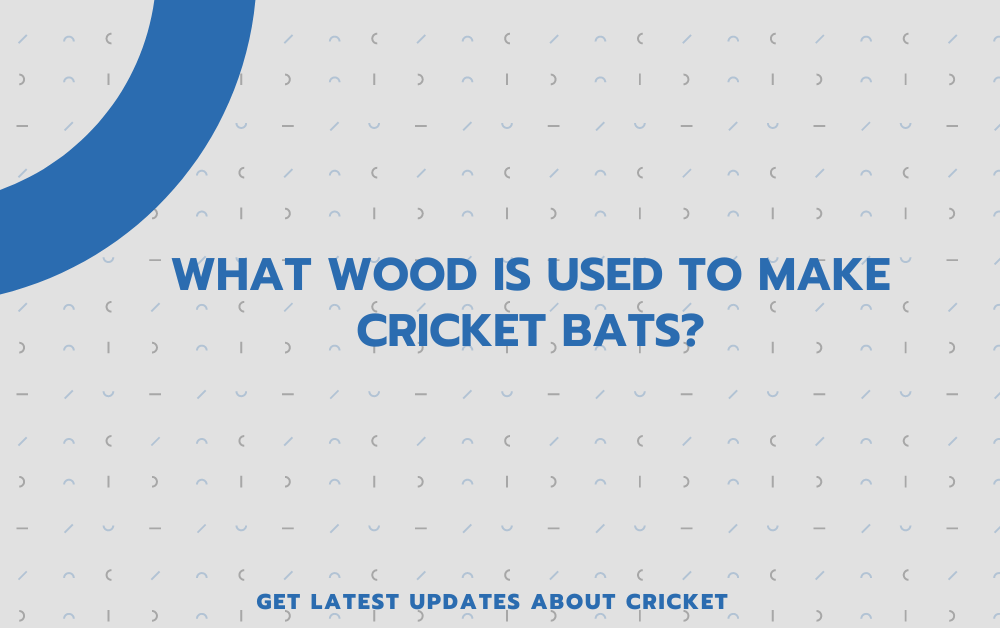What Kind Of Wood Is Used To Make Cricket Bats?
In this comprehensive guide, we dig into the fascinating world of cricket bats, exploring what kind of wood is used to make cricket bats? and why they are pivotal to the game’s essence. Cricket enthusiasts and curious minds alike will find valuable insights into how the choice of wood impacts the bat’s performance, durability, and overall quality. Whether you’re a player, a fan, or simply interested in the craftsmanship behind sports equipment, this article offers an engaging and informative journey through the history, science, and art of making cricket bats.
Cricket bats are iconic sporting equipment recognized globally. But what exactly are cricket bats made of? What type of wood goes into crafting these quintessential willow blades that provide the thrill of cover drives and pull shots? This article explores the traditional and modern materials used to manufacture cricket bats.
Bats are the most personal equipment for any cricketer. Understanding bat construction provides insight into producing durable, high-performance blades tailored to your technique and strength.
This understanding is essential, just like knowing the game’s rules, such as the “Powerplay in Cricket,” which is crucial for both players and fans alike.
Let’s analyze the science and art of crafting cricket bats using the ideal wood.
Introduction to Cricket Bat Crafting
The history and evolution of cricket bat design
The cricket bat, an essential tool of the sport, has undergone significant evolution since its inception. Initially resembling a hockey stick to combat underarm bowling, modern bats are refined products of careful craftsmanship.
Importance of wood selection in cricket bat manufacturing
The choice of wood, primarily willow, is central to the bat’s design, impacting everything from the player’s comfort to the bat’s longevity and performance. Understanding the bat’s development provides a window into the sport’s history and the intricate relationship between player and equipment.
Why Willow Has Been the Traditional Wood for Cricket Bats
For centuries, willow has been the default timber used to manufacture cricket bats. But what makes willow so suited to making cricket blades?
- Willow has a lightweight yet strong and shock-absorbent wood grain ideal for striking the hard cricket ball.
- The moisture content in willow enables bats to withstand impact vibrations when hitting the ball.
- Willow provides the ideal compression strength without splintering when pressed by a cricket ball at high speeds.
- It has natural oils that help protect and preserve the shape of the bat over time.
- Willow offers longitudinal flexibility that provides a springy “trampoline effect” when striking the ball.
In essence, no other wood combines durability, strength, flexibility and lightness like willow – hence its dominance in cricket bat manufacturing.
What Type Of Wood Is Use For Cricket Bats?
Why is willow the preferred wood for cricket bats?
Willow has long been the preferred choice for cricket bats. Its unique cellular structure provides the necessary flexibility and strength to withstand the impact of a cricket ball.
Characteristics of willow that make it ideal for cricket bats
The wood’s ability to absorb shock without splintering makes it ideal for the high-speed impact inherent in cricket. Additionally, willow’s light weight allows for ease of handling, a crucial factor in a batter’s performance.
Diving into Types of Willow: English and Kashmir
English Willow: The gold standard in cricket bat making
English willow, or Salix alba var. caerulea, is renowned for its superior quality. Grown primarily in England, this wood is prized for its fine grain structure, which enhances performance.
Kashmir Willow: An affordable alternative
Kashmir willow, from the Kashmir region of India, offers a denser alternative. Though slightly heavier, Kashmir willow bats are known for their durability and affordability, making them popular among amateur players.
What Kind Of Wood Is Used To Make Cricket Bats?
Specifically, cricket bats are fashioned from the English Willow or European Cricket Bat Willow botanically known as Salix Alba Caerulea. This is a premium, finely grained variety of white willow grown mostly in England.
The Cambium layer – the area between the bark and interior wood – offers high density ideal for crafting cricket blades. English willow provides unmatched resilience and performance expected in professional cricket bats.
What is Kashmir Willow? Can It Replace English Willow?
Kashmir willow or Salix Sericea is a cheaper alternative grown widely in northern India and Kashmir. At one-third the cost, Kashmir willow is popular for amateur to intermediate level cricket bats, especially in the subcontinent.
But Kashmir willow is heavier and lacks the specialized properties of English willow tailored to high-impact sports use. Tests reveal English willow bats offer 18-25% better performance in durability, longevity and striking power. Hence English willow remains the gold standard.
What Modern Materials Are Used to Make Cricket Bats?
While traditionalists prefer willow, some modern cricket bats incorporate alternative materials:
- Carbon fiber, titanium, or aluminum alloys help reduce bat weight while retaining strength.
- Composite materials like linen, nylon, or fiberglass aid performance in budget bats.
- Cane, bamboo, or rubber wood cores aim to offer cheap, lightweight alternatives.
- Reinforced edges and thicker profiles improve hitting power in modern bats.
While non-wooden bats don’t offer the craftsmanship of willow, technology can help tailor bats for different player needs. But expect purists to always favor traditional willow for its artisanal appeal.
What Other Wood Is Good for Cricket Bats?
Researchers have experimentally tested other woods:
- The dense, strong Teak wood showed potential though lacks willow’s flexibility.
- Rubber wood’s shock absorption was comparable to willow during impact.
- Bamboo’s layered, fibrous properties reduced bat weight significantly but durability was inferior.
But no other timber perfectly combines the specialized traits that make willow so suited to shaping cricket bats that marry power, control and durability.
The Science Behind Willow’s Superiority
Physical properties of willow contributing to its selection
Willow’s cellular structure, with its balance of soft and hard fibers, is uniquely suited for cricket bats.
Comparison with other woods: Why not teak or bamboo?
Its ability to compress upon impact and rebound to its original shape is unmatched by other woods like teak or bamboo. These properties enable the bat to transfer maximum energy to the ball, a key factor in driving the ball’s distance.
Crafting Process: From Tree to Cricket Bat
Harvesting and seasoning of willow
The process of transforming a willow tree into a cricket bat involves meticulous steps. After harvesting, the wood is seasoned for up to two years to reduce moisture content.
Steps in shaping and crafting the bat
Craftsmen then shape the bat, paying close attention to balance and weight distribution. This stage is crucial as it determines the bat’s feel and performance.
What is the Manufacturing Process of a Willow Cricket Bat?
Willow cricket bats undergo a meticulous 9 step production process:
- Selecting the premium willow Clef or Sarum wood varieties.
- Shaping the raw willow into a standardized bat blank.
- Precision cutting and sanding to create the bat contours.
- Incorporating technical handle shapes and cresting designs.
- Treating the wood with linseed oils to seal pores.
- Fitting rubber grips on the handle for control.
- Adding anti-scuff protective edges to prevent wear.
- Polishing and finishing with varnish for glossy looks.
- Assembling the completed bat ready for stroking cover drives!
The craftsmanship required explains why handmade willow bats cost significantly more than mass-produced bats. But traditionalists believe the care and skill justifies the premium.
The Role of Grade in Willow Quality
Willow grades, ranging from G1 to G4, indicate the wood’s quality. Grade 1 willow, the highest quality, features straight grains and minimal blemishes, offering superior performance. Lower grades may have irregular grains and more imperfections, affecting the bat’s performance and price. Understanding these grades helps players choose a bat suited to their level of play and budget.
Innovation in Cricket Bat Design
The evolution of cricket bats reflects changes in playing styles and technological advancements. Modern bats are designed with thicker edges and a higher middle, catering to aggressive batting techniques. The incorporation of new materials like carbon fiber reinforcements ensures durability while maintaining the wood’s natural feel.
Environmental Impact and Sustainability
Willow cultivation for cricket bats raises important environmental considerations. Sustainable harvesting practices are crucial to ensure the longevity of willow stocks. Manufacturers are increasingly adopting eco-friendly methods to minimize the ecological footprint of bat production.
Choosing the Right Bat: A Buyer’s Guide
Selecting the right cricket bat involves considering factors like weight, balance, and the player’s style. A well-chosen bat not only enhances performance but also ensures comfort during play. Regular maintenance, including oiling and knocking-in, extends the bat’s lifespan and maintains its performance.
The Future of Cricket Bats
As cricket evolves, so does the bat. Emerging materials and design concepts, like bamboo bats, offer potential alternatives to traditional willow. However, these innovations spark debates about preserving the sport’s essence versus embracing technological advancements. The future of cricket bats lies in balancing tradition with innovation, ensuring the sport’s integrity while enhancing player performance.
Conclusion
In closing, willow, specifically English willow, remains the ideal wood for constructing high-performance cricket bats – a status it has maintained for over 200 years. While composite materials provide cheaper alternatives, expect the thwack of leather on willow to continue providing joy to purists. Cricket is ultimately richer for preserving these woodcraft traditions tied to its heritage.
Key Takeaways
- Willow, particularly English and Kashmir varieties, is the preferred wood for cricket bats due to its unique properties.
- The quality of willow, indicated by its grade, significantly impacts the bat’s performance and price.
- Modern cricket bats have evolved in design to adapt to changing playing styles, with technological advancements enhancing their quality.
- Sustainability in willow cultivation and bat production is vital for the sport’s ecological footprint.
- The future of cricket bats may see new materials and designs, balancing tradition with innovation.
What Kind Of Wood Is Used To Make Cricket Bats? What Kind Of Wood Is Used To Make Cricket Bats? What Kind Of Wood Is Used To Make Cricket Bats? What Kind Of Wood Is Used To Make Cricket Bats? What Kind Of Wood Is Used To Make Cricket Bats? What Kind Of Wood Is Used To Make Cricket Bats? What Kind Of Wood Is Used To Make Cricket Bats?
What Kind Of Wood Is Used To Make Cricket What Kind Of Wood Is Used To Make Cricket Bats? What Kind Of Wood Is Used To Make Cricket Bats? Bats? What Kind Of Wood Is Used To Make Cricket Bats? What Kind Of Wood Is Used To Make Cricket Bats? What Kind Of Wood Is Used To Make Cricket Bats? What Kind Of Wood Is Used To Make Cricket Bats? What Kind Of Wood Is Used To Make Cricket Bats? What Kind Of Wood Is Used To Make Cricket Bats? What Kind Of Wood Is Used To Make Cricket Bats? What Kind Of Wood Is Used To Make Cricket Bats?
Watch Cricket Live Streaming at SmartCric
Smartcric.blog offers an exceptional live streaming experience for cricket fans, making it easy to stay updated with the latest matches and tournaments. In 2023, it provides real-time coverage of various cricket series, including the Australia tour of India, the New Zealand tour of Bangladesh, the Pakistan tour of Australia, and more. The platform caters to various formats like Test matches, ODIs, and T20 cricket, ensuring fans don’t miss any action. With its user-friendly interface and high-quality broadcasts, Smartcric.blog is a popular choice for cricket enthusiasts looking to watch live games conveniently on their devices.





